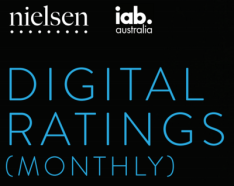Politics and statistics: Will we get a new era of digital leadership with our new digital rankings?

The new Nielsen Digital Ratings give a new window on Australia’s online audiences. Nic Christensen looks at what they mean, what will come next and why the IAB won’t follow through on talks of a regional merger.
In the five plus years since Nielsen launched its hybrid digital ratings, measuring the online desktop audience, mobile usage has exploded, leaving many publishers grumbling their total audience wasn’t being counted.
It’s been a slow and rocky path to get here, with a fair bit of argey bargey along the way – and it appears there will be yet more industry politicking to come as far as industry body the Interactive Advertising Bureau (IAB) is concerned.


Couldn’t think of a better opportunity for Miranda to demonstrate her mettle than with an APAC role.
Singapore is the business capital of Australia; Australia cannot afford to have a parochial, small town approach, and the IAB should definitely merge into APAC IAB. It’s a great idea that will mix the creativity of Australia with the head office / scale of Asia.
It’s a huge opportunity, something that the IAB NEEDS to do for the growth and fame of the local industry.
And as for Miranda, she’s a champion. I’ve seen the work she’s done when I was at Ogilvy APAC and now at PENSO – passionately bringing the industry together, lifting credibility and being relentless in growing the pie for digital marketing. And she’s an Aussie – so it’s a huge win-win. IAB Australia would be crazy not to take advantage of this opportunity to merge and gain her leadership.
As a member of both IABs I agree with Constantine Frantzeskos – Miranda for President!
Keep up the awesome work, Miranda. Couldn’t think of anyone more suited to lead this and make it amazing.
I’d accept that idea – but looking at their audience measurement capabilities it would be such a retrograde step.
This IAB/Nielsen release cutting edge. And Nic, the data was delayed for all the right reasons. No-one ever wants to miss a delivery deadline. The patience of the IAB, its members and Nielsen is to be applauded as impossible to predict issues arose and were solved one by one. Releasing to a deadline rather than a quality measure would have been plain stupid.
The next step – daily ratings is mind-blowing complex, so the industry will wait with baited breath. My money is on ‘sometime in 2017’ – and I’d willing accept to be proved wrong!
Miranda is a great leader and more than capable of leading the charge on the APAC stage.